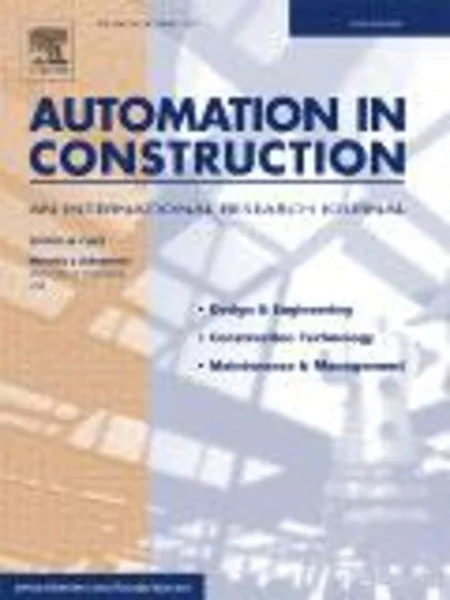-
developing an efficient algorithm for balancing mass-haul diagrams
جزئیات بیشتر مقاله- تاریخ ارائه: 1390/01/01
- تاریخ انتشار در تی پی بین: 1390/01/01
- تعداد بازدید: 585
- تعداد پرسش و پاسخ ها: 0
- شماره تماس دبیرخانه رویداد: -
a number of linear and integer programming techniques have been used to minimize the total cost of earthwork by considering the various factors involved in the process. although these models often ensure a global optimum for the problem, they required sophisticated formulations and are quite involved in their setup and definition as well as being expensive computationally and therefore may be of limited use in real life. in construction practice, mass-haul diagrams (md) have been an essential tool for planning earthwork construction for many applications including roadwork, piping, and other linear infrastructure facilities. one of the most common heuristics that is used widely by practicing engineers in the field to balance the md is the “shortest-haul-first” strategy. balancing the md using this heuristic is usually carried out either graphically on the drawing, or manually by computing values from the mass-haul diagram itself. however performing this approach graphically or manually is fairly tedious and time consuming. in addition manual and graphical approaches are prone to error. more importantly, if the project considered has a large number of stations (in the order of hundreds), then performing this balance manually becomes impractical. a robust algorithm is therefore needed that can automatically balance the md. the research discussed here presents a formal definition of an algorithm that uses a sequential pruning technique for automatically computing balances of mass-haul diagrams. it is shown that the new algorithm is more efficient than existing integer programming techniques and computationally runs in level of complexity of o(log n) time in most cases. thus this algorithm can handle problems with a large number of stations within a reasonable amount of time. in addition, a computer implementation and extensive computational experiments are provided. suggestions for how this algorithm can be used in cost-based or grade-based optimization of hauling distances and quantities are discussed.
مقالات جدیدترین رویدادها
-
استفاده از تحلیل اهمیت-عملکرد در ارائه الگوی مدیریت خلاقیت سازمانی و ارائه راهکار جهت بهبود
-
بررسی تاثیر ارزش وجوه نقد مازاد بر ساختار سرمایه شرکت های پذیرفته شده در بورس اوراق بهادار تهران
-
بررسی تأثیر سطح افشای ریسک بر قرارداد بدهی شرکت های پذیرفته شده در بورس اوراق بهادار تهران
-
بررسی تأثیر رتبه بندی اعتباری مبتنی بر مدل امتیاز بازار نوظهور بر نقد شوندگی سهام با تأکید بر خصوصی سازی شرکت ها
-
تأثیر آمیخته بازاریابی پوشاک ایرانی بر تصویر ذهنی مشتری پوشاک ایرانی (هاکوپیان)
-
فلسفه ی آموزش علوم
-
رفتار دینامیکی غیرخطی قاب های فولاد مجهز به میراگر فلزی تحت تاثیر زلزله های نزدیک گسل
-
انرژی های زمین شناختی و تعهدات زیست محیطی کارفرمایان (با نگاهی به قراردادهای بالادستی صنعت نفت و گاز ایران)
-
بررسی رابطه شادکامی، امید به زندگی و خلاقیت در دانش آموزان مقطع متوسطه
-
بررسی ارتباط سیستم اطلاعات پرستاری با کاهش استرس کاری پرستاران در بیمارستان های آموزشی زاهدان سال 1393
مقالات جدیدترین ژورنال ها
-
مدیریت و بررسی افسردگی دانش آموزان دختر مقطع متوسطه دوم در دروان کرونا در شهرستان دزفول
-
مدیریت و بررسی خرد سیاسی در اندیشه ی فردوسی در ادب ایران
-
واکاوی و مدیریت توصیفی قلمدان(جاکلیدی)ضریح در موزه آستان قدس رضوی
-
بررسی تاثیر خلاقیت، دانش و انگیزه کارکنان بر پیشنهادات نوآورانه کارکنان ( مورد مطالعه: هتل های 3 و 4 ستاره استان کرمان)
-
بررسی تاثیر کیفیت سیستم های اطلاعاتی بر تصمیم گیری موفق در شرکتهای تولیدی استان اصفهان (مورد مطالعه: مدیران شرکتهای تولیدی استان اصفهان)
-
تاثیر سواد بصری بر مصرف علائم و نشانه های مترو توسط مسافران در زندگی روزمره؛ مورد مطالعاتی: سیستم علائم و نشانه های مترو تهران
-
بررسی حقوقی ایجاب معلق
-
سرمایه اجتماعی گامی به سوی توسعه اجتماعی
-
ارائه راهکارهای پیشگیری و کاهش آسیب در زنان آسیب دیده اجتماعی با تاکید برآموزش
-
آثار قبض و رجوع در عقد هبه از منظر فقه امامیه و حقوق ایران




سوال خود را در مورد این مقاله مطرح نمایید :